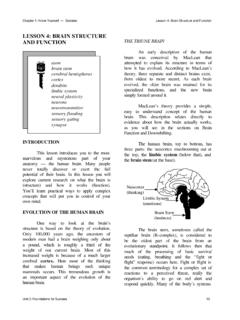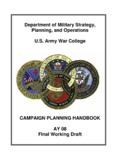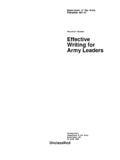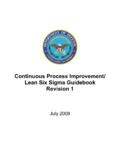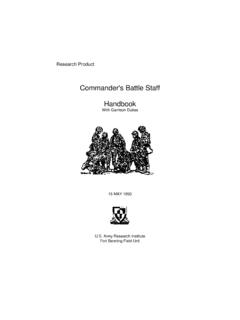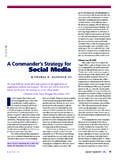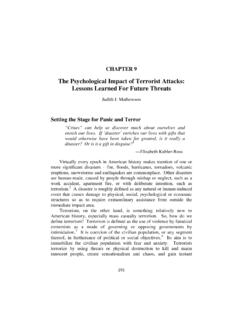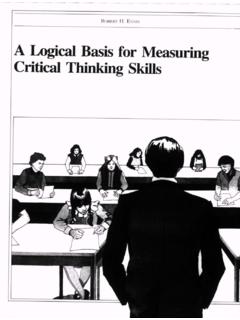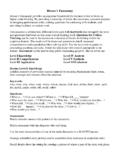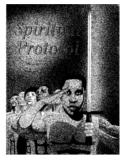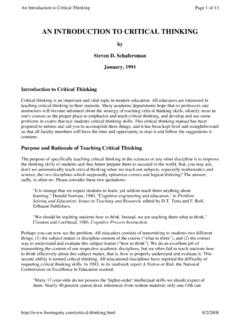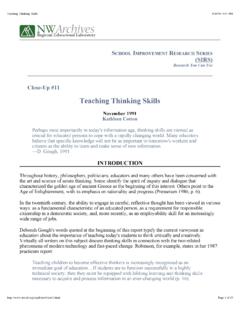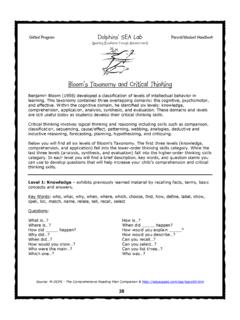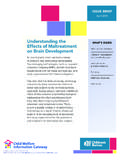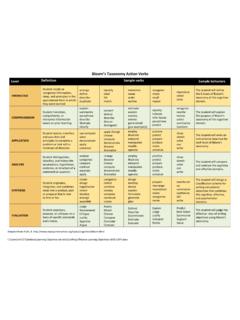Transcription of Thinking About Second & Third Order Effects: A Sample (And ...
1 Thinking About Second &. Third Order Effects: A Sample (And Simple) Methodology By Michael G. Miller Editorial Abstract: Mr. Miller explores the classical problems of cause and effect , and offers a systematic way to address complex contingency options. He advocates changing existing methodologies to support contemporary operational planning. Introduction consequences, enabling us to craft the branches of our plan as completely as possible. O ne often hears discussions in national security circles About the need to identify and understand the implications of potential primary, secondary and even tertiary effects of The purpose of this article is to offer an admittedly simple, but certainly systematic way of Thinking About 2nd and 3rd Order effects.
2 If applied, it should help those planners our actions. Gaining an understanding of these effects is responsible for crafting branches contingency options to fundamental to our ability to craft a branch an option that apply a repeatable methodology to get a handle (to the degree allows us to cope with changes in the operational environment. possible) on what might happen. In this way, planners are Joint Publication 1-02, the Department of Defense Dictionary of able to build into their plans a set of reasonably comprehensive, Military and Associated Terms, describes the term branch as: yet still manageable, contingency options.
3 The contingency options built into the basic plan. A branch is used for changing the mission, The Problem orientation, or direction of movement of a force to aid WARNING! success of the operation based on anticipated events, It is dangerous to fly two aircraft in close opportunities or disruptions caused by enemy actions proximity because of the magnitude of inter-related or reactions. aerodynamic effects. Stated another way, a branch is a preplanned option that allows us to respond to expected changes in the operating This quote from an older B-52 Flight Manual is intended environment.
4 But how do these changes come About ? Some to warn pilots About the dangers inherent in conducting aerial changes will be induced by our initial set of actions; other refueling, but it also serves to highlight the problems we face changes may arise because our initial set of actions creates effects that, in turn, become the cause of other effects. Enemy actions might induce still more changes. To address these changes and create the branches to our basic plan, we must examine potential consequences or effects of our actions, as well as those resulting from enemy actions and reactions.
5 However, this is not a simple examination; sometimes we do not or cannot accurately predict effects stemming from our actions. Without these accurate predictions, it becomes more difficult to build proper branches into the basic plan. But the military need is clear: the imperative to prevail in crises and conflicts dictates a concerted attempt to understand what 2nd and 3rd Order effects may stem from our own first- Order effect . While we may not be able to predict the cause- effect behavior of inter-related complex systems with precise certainty, we can try to understand the nature of the elements that will interact.
6 In B-52 Stratofortress refuels over Afghanistan this way, we gain at least some sense of the range of potential (Air Force Link). 36 Summer 2006. in Thinking About and understanding potential 2nd and 3rd Order effects. The elements of the problem can be summarized this way: Effects have causes Effects can, and usually do, become causes of another effect (s). There can be a large number of cause- effect chains . created based on a single causal event Effects that were intentionally caused to produce a specific outcome can spawn an effect that was unintended and/or unpredicted These unintended or unpredicted effects spawned from Figure 1.
7 The original cause can be unwelcome if these are counter to the Process Diagram objectives It is certainly beyond the scope of this article to explore the simplicity's sake, we are going to identify one additional effect subject of causality theory. Let us simply say causality theory at a time, although theoretically many additional effects can and analysis can be extremely complex. While mathematical be spawned by the first effect that was (don't worry, there will models can help solve problems of causality, applying these be an example later to make things more clear).
8 Models to operational planning especially during crisis action Step Two: Decide what the ramifications of Effect2 will be planning can be problematic. It takes time to establish the on your objectives. If the ramifications are negative, then . proper modeling conditions, define the variables, and run the Step Three: Decide if you can mitigate the negative models. Often there just isn't sufficient time to take advantage ramifications Effect2 has on your objectives. If so, then Effect2. of available modeling resources. Thus, operational planners is viewed as Cause3 and we run the three step process again, who are on the hook to develop branches must have a way to resulting in Effect3.
9 If the negative ramifications of Effect2 on think through the potential ramifications of a causal event, to the objectives cannot be mitigated, we must reconsider whether identify potential positive and negative outcomes with respect to conduct the Cause1 action that yielded Effect1. Figure 1. to the objectives. Planners must have some way to bound, shows the process. scope, or otherwise limit the examination of cause- effect chains An Example to those most important. The best way to illustrate the concept of 2nd and 3rd A Sample Methodology Order effects is by example; the one we will use is the Biblical Before presenting this methodology, one other complicating example of David and Goliath.
10 The following story is taken factor of particular significance to the information operations (IO) planner should be introduced. This is the notion that effects can become causes that spawn more effects, and these manifest themselves in three different areas: The Time Area (seconds, minutes, hours, days, weeks). The Space Area (local, regional, international, terrestrial and outer). The Domain Area (cognitive, electronic, human and physical). With this in mind, let's lay out the methodology using this template, to help with the explanation and later example: Cause1 yields Effect1.
